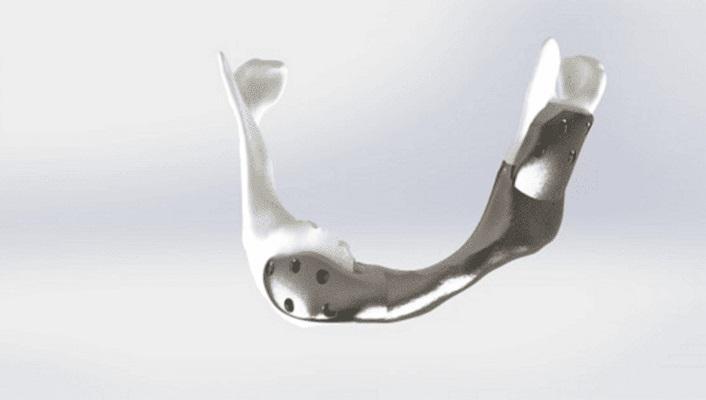According to a press release from the Netherlands Cancer Institute (NCI), a patient with head and neck cancer has received the first 3D-printed titanium mandible as a result of a successful operation. The jaw was reconstructed based on the patient's x-rays.

After four years of research by NCI head and neck surgeons and the Dutch 3D printing company Mobius 3D Technology (M3DT), a new type of mandible has been created using magnetic resonance imaging and computed tomography.
The new jaw is the same shape and weight as the original bone, but is stronger than the metal plates commonly used in jaw replacement surgeries. According to NCI research, it also features improved attachment technology, which makes the implant much stronger as the load is better distributed.
Tumors in and around the mandible are usually treated by removing a fragment of the mandible. If possible, the mandible is reconstructed using bone from other parts of the patient's body. These reconstructive surgeries are complex, require vascular anastomosis, and potentially cause pathology at the donor site.
Reconstruction of the lower jaw using metal plates causes other problems. According to the NCI, in about 40% of cases, the plates are extruded through the mucous membrane or skin and the screws loosen. For the patient, this has significant implications.
Because the M3DT titanium implant is custom made, the jaw retains its shape and the pressure on the mucosa and skin is more evenly distributed. The implant is also equipped with locking screws to help it stay in place, while the mesh structure on the inside allows the new implant to maintain its strength. In addition to all the advantages, the prosthesis feels light to the patient.
The operation is also much easier and faster, since the set of instruments that the surgeon uses during the procedure depends on the individual patient and is selected in advance. This implant is expected to see more widespread use in 2023 or 2024.
“We hope this will reduce complications and improve functional and aesthetic outcomes,” the NCI said in a press release.
